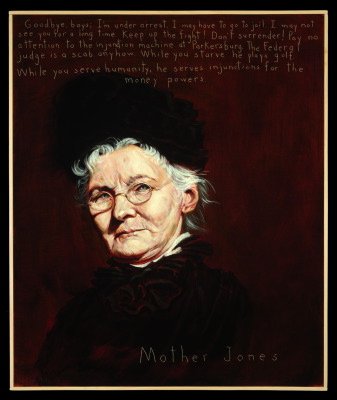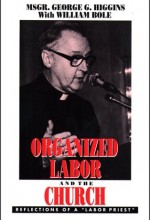With all the problems to ponder—war, hunger, intolerance, and the like—it’s impressive that some on the left would find time to push for getting one of their foremothers onto a 45-cent stamp. But that’s what some are trying to do with the dowdy visage of Mary Harris Jones, better known as “Mother Jones.”
The latest lobbying of the U.S. Postal Service on this front has come in an article published last week in the Huffington Post, under the headline, “If Elvis can get his own stamp, why not Mother Jones?”
“By all accounts Mary was a brilliant, charismatic speaker, and a fearless, dedicated champion of social justice,” Los Angeles playwright David Macaray wrote. He was speaking on a first-name basis about the Irish-born labor activist who fought captains of American industry for decades around the turn of the 20th century, and often prevailed. “The authorities (politicians, mine owners, business groups) were terrified of her,” Macaray reports.
The fusty image of Mother Jones, in her laced black dress and black bonnet, has crept back into political consciousness over the past few decades. Some have discovered her through the left-leaning national magazine that bears her name. Others have encountered her fiery rhetoric on T-shirts, like one that proclaims: “Pray for the dead, but fight like hell for the living.”
For the American Left, or what’s left of it, there’s much to commemorate here. There may also be some inconvenient truths about Mother Jones, depending on one’s particular leftish leaning. And these make her all the more interesting, someone I’d actually like to see on a postage stamp.
Jones biographer Dale Fetherling found the right label for the mother of all union agitators. He called her a “conservative radical.”
She was a God-fearing widow who saw her labor activism as a divine calling: “We are doing God’s holy work. We are putting the fear of God into the robbers” of the poor. She broke with the socialists, ridiculing their ideology as “mostly sentiment, and that’s why it [socialism] will never work.” She appalled the suffragists, declaring that “home training of the child should be her [women’s] task, and it is the most beautiful of tasks.” (She herself had lost her husband and four children in a yellow-fever epidemic that blazed through Memphis in 1867.)
Mother Jones was a lifelong Roman Catholic, albeit an irreverent one. She saved some of her sharpest barbs for priests and nuns who fled the fight for social justice. During the Colorado coal strike of 1913-1914, she called the Sisters of Charity “moral cowards … owned body and soul by the Rockefeller interests.” The sisters had let the state militia use their hospital in Trinidad as a prison for union organizers—including Mother Jones.
In the end, she was feted far and wide. On May 1, 1930, her 93rd birthday, even John D. Rockefeller Jr. cabled a warm message to her in Washington, D.C., where she spent her final years with friends. In a reply dictated from her sickbed, Jones told her natural enemy he had “a Christian heart.”
Seven months later, Jones passed away. She was given a high requiem Mass at St. Gabriel Church in Washington, where thousands came to view her body in a gray casket with black rosary beads wrapped around her fingers. …read more






